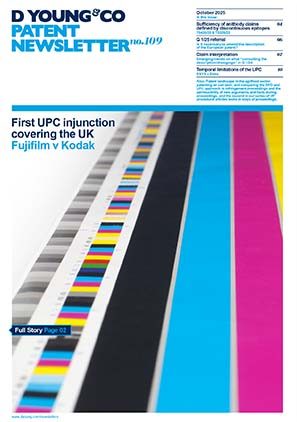Technological innovation meets endangered wildlife: can AI patent analysis help protect threatened species?
Artificial intelligence (AI) is becoming established as a useful tool for the searching of patents and analysis of patent data. The enormous variety of technologies covered by patents offers access to information about almost any area of innovation one can imagine. A particularly unusual sector has been investigated by a group of researchers, primarily from the University of Oxford, who have explored the patent landscape to reveal intriguing details about the exploitation of threatened wildlife species. The study format, results and conclusions have been published in a Nature Communications paper.
The study shows that patent filings for inventions relating to endangered species are more common than one might think. Businesses utilising such species are as keen to gain a commercial edge over their competitors as those operating in more conventional spheres, and choose to protect the intellectual property arising from their innovations in the traditional manner. Threatened wildlife is, of course, routinely safe-guarded by policy and legislation that manages, regulates or outright bans the exploitation and trade of relevant species, and some of the innovation may be driven by companies desiring to keep ahead of or outside of the law or to achieve a competitive advantage within a new regulation.
In general, policy making in this area has tended to be based on historical data for both legal and illegal trading and has lacked foresight. The analysis of the selected patent data has identified possible links between patenting activity and changes in trading and similar events, which the researchers suggest could be used to better inform future regulatory measures and add some beneficial proactivity to the management of trading in threatened species.
The research looks at patents relating to six exploited species: bears, rhinoceroses, pangolins, sturgeon, horseshoe crabs, and the caterpillar fungus cordyceps. These were selected to include a range of trade legalities, threat level and uses to which the species are put. A fifty-year time frame of patent filing dates from 1970 to 2020 was analysed, for which a total of 27,308 patents concerning the six species was identified. These represent 0.23% of all patents filed in that period. Interestingly, these patents show a 130% per-year increase in filing numbers compared to a mere 104% increase for all patents in that time frame. The desire to protect technical developments in this field hence seems more intense than in less controversial areas, and the analysis shows, contrary to what one might expect, that a trade ban on a particular species does not necessarily reduce innovation around that species. Above-average growth in patenting of wildlife-related innovation persists against a background of enhanced efforts (both regulatory and non-regulatory) to reduce unwanted trading of vulnerable species.
Machine learning was applied to detect changes in the patent filing trends, and to explore correlation with external factors relevant to the various species such as the introduction of commercial trade bans. For example, China legalised the patenting of traditional Chinese medicines in 1993, and increases in patents relating to bears, pangolins and caterpillar fungus, all used in medicinal products, occurred in the early-to-mid 1990s. A significant peak in rhinoceros patents coincides with a major increase in rhinoceros poaching in 2008, despite a 1993 ban in China for medicinal rhinoceros products.
The subject matter of the investigated patents is diverse. In addition to medicinal products, there are processes for farming, artificial breeding, harvesting and cultivating, and for synthetic versions of wild products. Many cover new developments in longstanding uses, while others are for entirely new products and methods. The authors suggest that identification of new products via patent filings could be used to target illegal trading more rapidly than current approaches which find such products only after they have been commercialised.
For example, patent offices could flag newly filed patents relating to species of interest to governments to enable early intervention, noting that the patenting of illegal products is generally permitted so at present patent information is not used in this way. Further ways to utilise patent data to similar effect, and suggestions for additional AI-based identification of relevant information, are included.
Overall, this is a fascinating insight into the dubious side of wildlife commercialisation, unexpectedly revealed through the lens of patent data scrutinised by AI.
Useful link
“Early warning of trends in commercial wildlife trade through novel machine-learning analysis of patent filing”, Nature Communications, 15, 6379 (2024), A Hinsley, DWS Challender, S Masters, DW Macdonald, EJ Milner-Gulland, J Fraser & J Wright: dycip.com/nature-communications-15-6379

